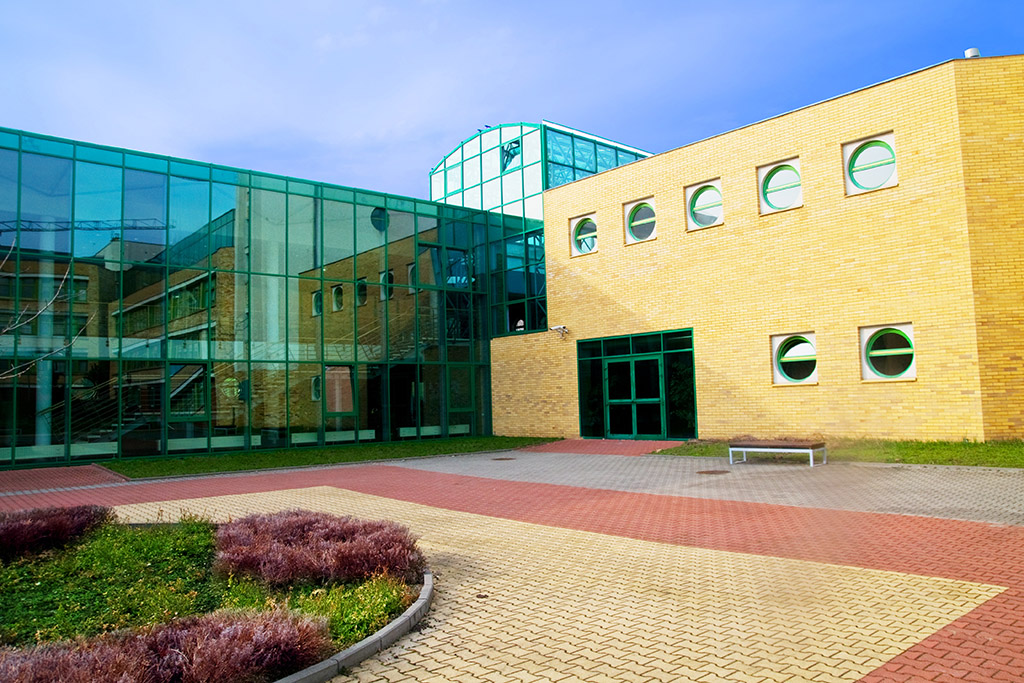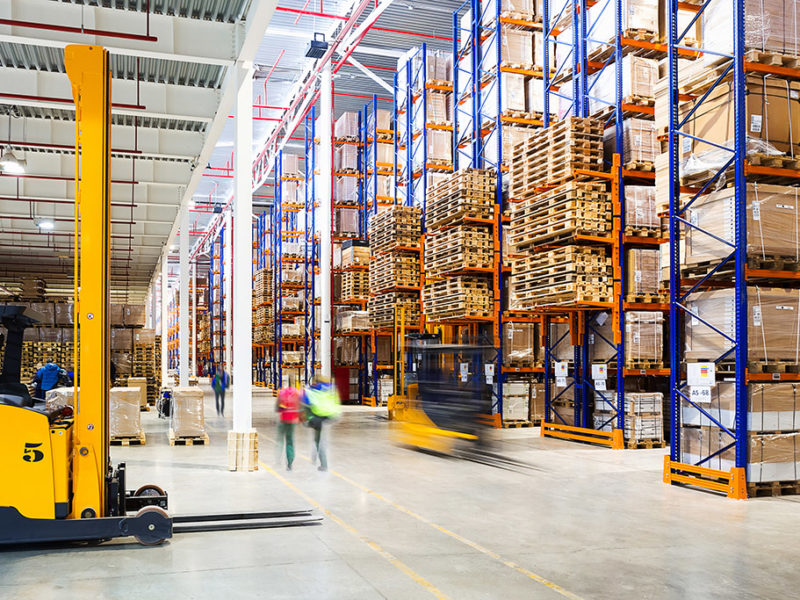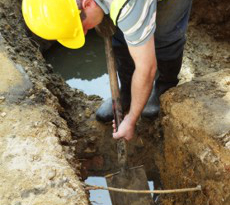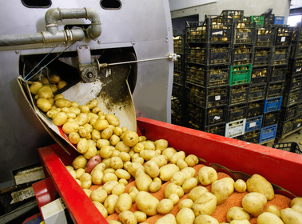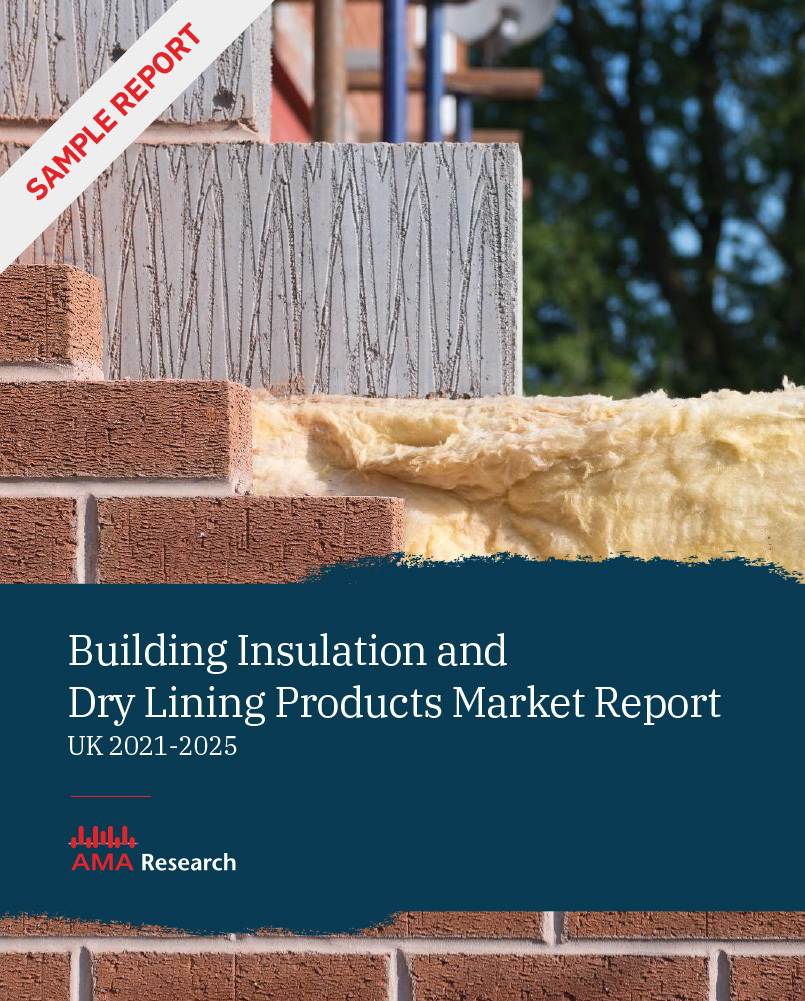Construction in the Higher Education and Student Accommodation Sector Report – UK 2018-2022
Available as an Instant Download PDF
The 7th edition of the Construction in the Higher Education and Student Accommodation Sector Report specifically reviews the higher education (HE) construction market, with specific focus on the purpose-built student accommodation (PBSA) sector.
£1,599.00 Exc. VAT
The 7th edition of the ‘Construction in the Higher Education and Student Accommodation Sector Report – UK 2018-2022’ specifically reviews the higher education (HE) construction market, with specific focus on the purpose-built student accommodation (PBSA) sector.
Key content covered in the report
- Structure and size of the UK PBSA and HE sectors across London and key regions.
- Review of the HE estate – size, age, condition and running costs.
- Analysis of current and forecast capital expenditure in the HE sector.
- Review of capital expenditure of the top 40 universities and the teaching/research HE construction pipeline.
- Leading commercial operator/ investor/ developer activity in the PBSA market.
- Analysis of factors affecting PBSA development.
- Total construction output in the HE sector 2017-2022.
Areas of particular interest
- Partnerships between universities and private sector operators – student housing partnerships.
- Impact of rising build and site costs and the trend for more affordable accommodation.
- Supply – demand imbalance in the PBSA sector and the problem of under-supply in many university towns, especially London
- Review of new construction activity in the PBSA/HE sector and an overview of contractor/developer capability and experience in the sector. In addition, we review the PBSA development pipeline over the next 4-5 years.
- Review of key influences on future student growth, and the likely impact of Brexit on EU student numbers.
- Detailed market data and insight on the higher education and student accommodation market by AMA Research, a leading UK provider of construction market intelligence.
Some of the companies included:
Alumno Developments, Balfour Beatty, BAM, Barberry Developments, Bargate Property Ltd, BSRE, CODE Students, Crosslane Group, Crown Student Living, Downing, John Turner Construction, Kier, Interserve, Land Securities, Mace, McAleer & Rushe, McLaren Construction, McLaren Property, Morgan Sindall, Peel Group, Peveril Securities, Quintain, Vinci, Vita Student, UNITE Group, Wates, Watkin Jones, Willmott Dixon
Construction in the Higher Education Sector
- Total non-residential construction output – value of non-domestic output to 2022. Construction output by sector in 2017-2022.
- Higher education construction output – market size and future prospects.
- University estates capital expenditure – size, age and condition of the University estate; capital expenditure by type of building; outlook for HE capital spending; University/student accommodation capital building programmes.
- University partnerships with the private sector/ university enterprise zones.
Construction Supply in the Higher Education Sector
- Leading contractors in the higher education sector and leading clients in the student accommodation sector.
- Contractor activity in 2017 – non-residential projects; residential/student accommodation projects.
- Procurement of university construction work – purchasing consortia; frameworks; specification.
Higher Education in the UK
- Overview of universities in the UK – rise of the ‘New Universities’; role of private providers in the HE sector.
- Student growth – applications; overseas students; impact of Brexit on student numbers.
- Tuition fees – implications for Universities’ spending.
- Higher education spending and investment – funding structures; HEFCE funding for England; SFC funding for Scotland; HEFCW funding for Wales.
- Analysis of university endowment funds and bond markets in the higher education sector.
The Student Accommodation Market
- Overview and market structure – provision of and market for student accommodation in London and key regions.
- Types of student accommodation – university halls; partnerships between universities and private sector operators; commercially operated halls.
- Leading commercial operators of student accommodation.
- Factors affecting the PBSA market – PBSA rents; planning issues and Community Infrastructure Levies (CIL).
- PBSA development trends and construction costs; PBSA development by type of accommodation. Use of offsite construction in the PBSA market.
- PBSA development pipeline – PBSA activity by region; commercial operator development pipeline; UK PBSA development pipeline value.
- Forecast and outlook for the UK student accommodation market.
Despite the increase in tuition fees, student numbers continue to expand in the higher education sector placing great pressure upon university teaching, research and residential infrastructure. There is now a considerable need to address past under-investment and provide additional space for teaching, research and student accommodation.
Total construction output in the Higher Education sector was estimated to be worth close to £4bn in 2017 (public and private work), and this is forecast to rise as the market for university construction work steadily increases. Investment continues to increase among UK universities as competition to attract overseas students has intensified. There is a particularly buoyant pipeline of ongoing new work at a number of universities as part of major long-term development programmes to increase provision for additional students, upgrade residential, teaching and research accommodation, and to build new campuses.
However, while the increased level of investment is a positive sign, many HEIs still have large amounts of non-residential space in poor condition. Because there are significant backlog repair and maintenance issues associated with many university buildings, many universities are being forced to decide whether to replace or refurbish a large number of their buildings. In the coming years, university estates may need to remodel their capital programmes to meet revised funding expectations with increasing emphasis on effective use of space, reuse of existing built assets and programmes that drive carbon reduction targets.
Going forward, higher education sector workloads are expected to be boosted by key long-term capital building programmes announced by universities as they seek to invest in research, teaching and accommodation facilities, compete to attract the best (and highest paying) students and prepare for the challenges that lie ahead as a result of Brexit.
Contents Listing
- 1. INTRODUCTION 8
- 1.1 INTRODUCTION 8
- 1.2 CONSTRUCTION ISSUES 9
- 2. SUMMARY AND FUTURE PROSPECTS 10
- 2.1 SUMMARY 10
- 2.2 PIPELINE AND REGIONS 13
- 3. ECONOMIC ENVIRONMENT 16
- 3.1 GDP 16
- 3.2 INFLATION & INTEREST RATES 17
- 3.3 UNEMPLOYMENT 18
- 3.4 HOUSEHOLD CONSUMPTION 18
- 3.5 HOUSING & CONSTRUCTION 19
- 3.6 STERLING 20
- 3.7 POPULATION PROFILE 20
- 3.8 CONCLUSIONS 21
- 4. CONSTRUCTION IN THE HIGHER EDUCATION SECTOR 22
- 4.1 TOTAL NON-RESIDENTIAL CONSTRUCTION OUTPUT 22
- 4.1.1 Construction New Work – Value of Non-Domestic Output to 2022 22
- 4.1.2 Construction Output by Sector 23
- 4.2 HIGHER EDUCATION CONSTRUCTION OUTPUT 25
- 4.2.1 Definition 25
- 4.2.2 Construction Output Market Size – Higher Education & Student Accommodation 25
- 4.2.3 Construction Output Market Prospects 27
- 4.3 KEY DRIVERS FOR THE HIGHER EDUCATION SECTOR 30
- 4.3.1 Capital Investment in the Devolved Regions 30
- 4.3.2 University Estates Capital Expenditure 31
- 4.3.3 University/Student Accommodation Building Programmes 39
- 4.3.4 Partnerships with the Private Sector 45
- 5. FOCUS ON THE STUDENT ACCOMMODATION MARKET 48
- 5.1 OVERVIEW AND MARKET STRUCTURE 48
- 5.2 MARKET SIZE AND STRUCTURE 49
- 5.2.1 Value of the UK PBSA Development Pipeline 49
- 5.2.2 Forecast for the UK Development Pipeline 49
- 5.2.3 Student Accommodation Development Pipeline 52
- 5.3 PROVISION OF STUDENT ACCOMMODATION 56
- 5.3.1 Overall Provision 56
- 5.3.2 Regional Provision of Student Accommodation 57
- 5.3.3 Types of Student Accommodation 59
- 5.4 FACTORS AFFECTING THE MARKET 64
- 5.4.1 PBSA Rents 64
- 5.4.2 Planning Issues and Community Infrastructure Levies (CIL) 65
- 5.4.3 PBSA Development Trends and Costs 67
- 5.4.4 Use of Offsite Construction in the PBSA Market 69
- 6. HIGHER EDUCATION IN THE UK 71
- 6.1 OVERVIEW OF UNIVERSITIES IN THE UK 71
- 6.1.1 Rise of the ‘New Universities’ 71
- 6.1.2 Role of Private Providers in the HE Sector 71
- 6.2 STUDENT GROWTH 72
- 6.2.1 Applications 72
- 6.2.2 Overseas Students 73
- 6.3 TUITION FEES AND IMPLICATIONS FOR UNIVERSITIES’ SPENDING 75
- 6.4 HIGHER EDUCATION SPENDING AND INVESTMENT 76
- 6.4.1 Funding Structures 76
- 6.4.2 HEFCE Funding for England 78
- 6.4.3 SFC Funding for Scotland 79
- 6.4.4 HEFCW Funding for Wales 80
- 6.4.5 Endowment Funds 80
- 7. CONSTRUCTION SUPPLY IN THE HIGHER EDUCATION SECTOR 83
- 7.1 LEADING CONTRACTORS IN THE HIGHER EDUCATION SECTOR 83
- 7.1.1 Contractor Activity in 2017 83
- 7.2 LEADING CLIENTS IN THE STUDENT ACCOMMODATION SECTOR 86
- 7.2.1 PBSA Developer-Contractors 86
- 7.3 PROCUREMENT OF UNIVERSITY CONSTRUCTION WORK 88
Tables & Charts
- CHART 1: UNIVERSITY FACILITIES AND PURPOSE BUILT STUDENT ACCOMMODATION (PBSA) CONSTRUCTION OUTPUT – BY VALUE (£BN) 2013 TO 2022 11
- TABLE 2: GDP DATA – 2015-2017 – KEY CONSTITUENT ELEMENTS 16
- CHART 3: INTEREST RATES AND INFLATION (CPI) FROM 2000-2022 18
- CHART 4: PDI & SAVINGS RATIO AT CURRENT PRICES 2000-2022 19
- TABLE 5: EXCHANGE RATE FLUCTUATIONS 2014-2020 – STERLING TO THE DOLLAR, AND THE EURO, SPOT RATES 20
- CHART 6: VALUE OF TOTAL NON-DOMESTIC CONSTRUCTION OUTPUT 2013-2022 BY VALUE (£BN AT CURRENT PRICES) 22
- CHART 7: VALUE OF NON-RESIDENTIAL CONSTRUCTION OUTPUT NEW WORK BY SECTOR – % BY VALUE 2017 23
- CHART 8: GROWTH IN UK HIGHER EDUCATION AND OTHER EDUCATION CONSTRUCTION OUTPUT – BY VALUE £BN AT CURRENT PRICES 2013 TO 2022 26
- CHART 9: HIGHER EDUCATION CONSTRUCTION OUTPUT AS A PROPORTION OF ALL EDUCATION WORK IN 2017 (%) 26
- CHART 10: UK HIGHER EDUCATION AND STUDENT ACCOMMODATION CONSTRUCTION OUTPUT – BY VALUE £BN AT CURRENT PRICES 2013 TO 2022 28
- TABLE 11: TOP CAPITAL ALLOCATIONS TO HIGHER EDUCATION INSTITUTIONS 2017-18 (£M) 30
- TABLE 12: SFC SCOTLAND CAPITAL FUNDING TO HIGHER EDUCATION INSTITUTIONS 2017-18 (£M) 31
- CHART 13: UNIVERSITY ESTATE RUNNING COSTS 2015-16 (% BY FUNCTION) 33
- CHART 14: AGE OF THE NON-RESIDENTIAL UNIVERSITY ESTATE 2015-16 34
- CHART 15: AGE OF THE RESIDENTIAL UNIVERSITY ESTATE 2015-16 35
- TABLE 16: HIGHER EDUCATION ESTATE MANAGEMENT DATA BY INSTITUTION 2015-16 36
- CHART 17: PUBLIC SECTOR HIGHER EDUCATION SECTOR – CAPITAL EXPENDITURE BY TYPE OF BUILDING (%) 2015-16 37
- TABLE 18: UK HIGHER EDUCATION INSTITUTIONS – CAPITAL EXPENDITURE BY TYPE OF BUILDING 2015-16 38
- CHART 19: HIGHER EDUCATION CAPITAL EXPENDITURE 2014-2020 (£BN) 39
- CHART 20: QUANTITY OF HIGHER EDUCATION CONSTRUCTION CONTRACTS AWARDED IN 2017 BY TYPE OF BUILDING (%) 40
- CHART 21: HE NON-RESIDENTIAL CONSTRUCTION CONTRACTS AWARDED IN 2017 BY TYPE OF DEVELOPMENT (%) 40
- TABLE 22: HIGHER EDUCATION SECTOR – KEY PROJECTS/SCHEMES AT EARLY PLANNING STAGE (AS AT NOVEMBER 2017) 44
- TABLE 23: UNIVERSITY ENTERPRISE ZONES IN THE UK – SUMMARY 46
- CHART 24: ESTIMATED VALUE OF THE PBSA MARKET AND PIPELINE TO THE CONSTRUCTION INDUSTRY: 2013-2022 49
- CHART 25: ESTIMATED NUMBER OF NEW STUDENT BED SPACES BUILT PER YEAR – 2012-2022 50
- TABLE 26: PBSA SCHEMES: CONTRACTS AWARDED (YEAR TO JANUARY 2018) BY EXPECTED YEAR OF COMPLETION, NUMBER OF SCHEMES, VALUE (£M) AND NUMBER OF BED-SPACES 52
- TABLE 27: PBSA SCHEMES: NUMBER AND VALUE OF CONTRACTS AWARDED (YEAR TO JANUARY 2018) BY MAJOR CITY 53
- CHART 28: FORWARD PIPELINE OF STUDENT BED-SPACES BY OPERATOR 2018-21 54
- CHART 29: TYPES OF STUDENT ACCOMMODATION IN THE UK – APPROXIMATE SHARE BY TYPE 2016-17 56
- TABLE 30: REGIONAL PROVISION OF STUDENT ACCOMMODATION AT MAJOR UK UNIVERSITIES 2017-18 58
- CHART 31: LONDON STUDENT ACCOMMODATION – BED-SPACES BY TYPE 2017-18 (%) 59
- TABLE 32: REGIONAL PROVISION OF STUDENT ACCOMMODATION AT MAJOR UK UNIVERSITIES 2017-18 – NO. OF BEDS/% IN UNIVERSITY ACCOMMODATION 60
- CHART 33: UNIVERSITY AND PRIVATE SECTOR PARTNERSHIPS: RISE IN DBFO AND STOCK TRANSFER SCHEMES 2007-2017 61
- TABLE 34: MARKET SHARES OF LEADING PBSA OPERATORS (INCLUDING HOUSING ASSOCIATIONS) 2017 64
- TABLE 35: CIL RATES BY CITY AND BY TYPE OF DEVELOPMENT (INCLUDING STUDENT ACCOMMODATION) (£/SQ. M.) 66
- CHART 36: NEW PBSA DEVELOPMENTS – ACCOMMODATION BY TYPE 2017-18 (%) 68
- CHART 37: HEI APPLICATIONS 2013-2017 (JUNE DEADLINE) (UK, EU & OVERSEAS APPLICANTS) 73
- CHART 38: 2017 OVERSEAS APPLICANTS TO UK UNIVERSITIES BY COUNTRY OF ORIGIN 74
- TABLE 39: ANNUAL TUITION FEES IN THE UK BY COUNTRY (COURSES STARTING IN 2018) 75
- CHART 40: UK HIGHER EDUCATION MAIN SOURCES OF INCOME – ACADEMIC YEAR 2015-16 76
- CHART 41: HEFCE FORECASTS FOR HIGHER EDUCATION SECTOR INCOME LEVELS IN ENGLAND: 2015-2020 (£BN) 78
- TABLE 42: HEFCE FINANCIAL GRANT FOR FINANCIAL YEARS 2013-14 TO 2017-18 (£M) 79
- TABLE 43: HEFCE FUNDING 2017-18 – TOP UNIVERSITIES BY SIZE OF GRANT (£M) 79
- TABLE 44: SFC FINANCIAL GRANT FOR FINANCIAL YEARS 2013-14 TO 2017-18 (£M) 79
- TABLE 45: SFC FUNDING 2017-18 – ALLOCATIONS TO UNIVERSITIES (£M) 80
- TABLE 46: TOP 15 UK UNIVERSITY ENDOWMENT FUNDS 2016-17 (£M) 81
- TABLE 47: TOP 10 CONTRACTORS IN THE NON-RESIDENTIAL HE SECTOR (BY NUMBER & VALUE OF CONTRACTS AWARDED) YEAR TO JANUARY 2018 84
- TABLE 48: TOP 20 CONTRACTORS IN THE RESIDENTIAL/STUDENT ACCOMMODATION SECTOR (BY NUMBER & VALUE OF CONTRACTS AWARDED) YEAR TO JANUARY 2018 86
- TABLE 49: TOP 30 PBSA CLIENTS IN THE RESIDENTIAL/STUDENT ACCOMMODATION SECTOR (BY NUMBER & VALUE OF CONTRACTS AWARDED) YEAR TO JANUARY 2018 88
- TABLE 50: HIGHER EDUCATION SECTOR – PURCHASING CONSORTIA AND KEY ESTATES FRAMEWORKS 89
- TABLE 51: HIGHER EDUCATION SECTOR – KEY LONG-TERM CAPITAL FRAMEWORKS 91

Paired Report Discount
Save £250 for every two reports you buy
Discount applied in basket
Frequently bought together
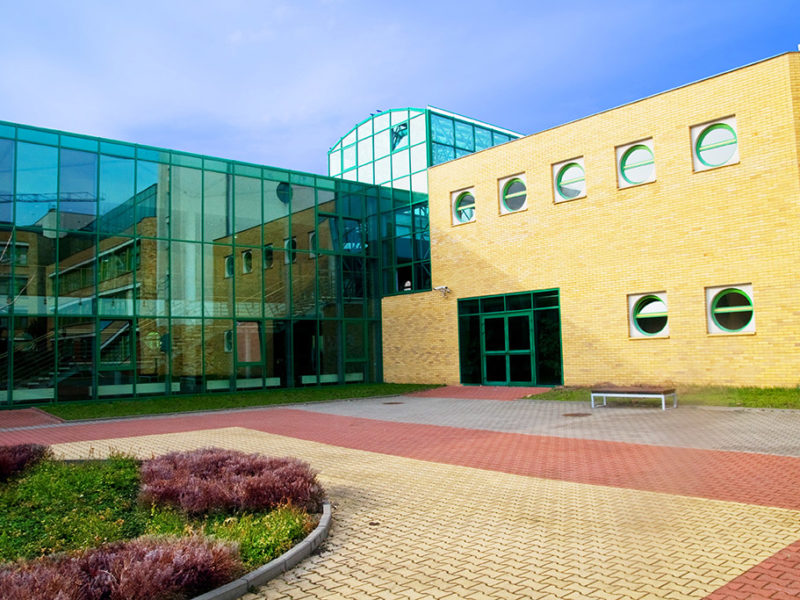
Trusted by industry leaders
For more detailed requests speak to our research experts directly
Research you can depend on
Our reports go deeper to give you the insights needed to make your next strategic move.
- Detailed assessment of the market – analysis of the market structure and recent developments within the market.
- Market prospects up to 4 years – market value, opportunities, impact of Covid-19, Brexit etc.
- Detailed information – market size, influences, market factors and key players.
- Analysis by product group – market size, product mix, sector trends etc.
